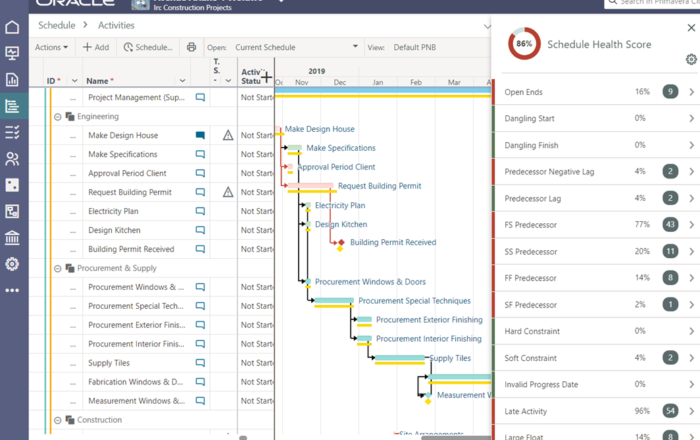
Progress Update in 7 steps in Primavera Cloud (OPC)


Primavera is the market leader in the project control industry to schedule and control large projects. As the project market is evolving and the visibility of project control is growing, a shift in planning software can be observed towards more integrated cloud-based solutions such as OPC. In this blog we will guide you through your first ever progress update in OPC
Once your qualitative project baseline is set up, approved and your project has started, the next step is to closely monitor and track the progress of the project. When this is your first time updating a schedule in Primavera Cloud, this can become quite challenging.
In the following 7 steps we will guide you through the advised method to add progress to your schedule.
Step 1: Create and Assign a Baseline
In order to track your schedule performance, a baseline is essential as a reference for your project. Save the current schedule as a baseline before making any changes. Forgot to save a baseline and already made changes? No worries, OPC has the option to create a baseline from the schedule History.

Once created, the baseline type can be assigned by choose one of following 2 types:
Project Baselines: These are the Original, Current and Supplementary Baseline. These baselines should be the officially agreed and approved project schedule(s). The baseline type to be used for Earned Value Calculations can be selected under the Project Settings.
User Baselines: These are the unofficial baselines that the user can create to measure the performance as the project progresses. Often these are time snapshots of the project, for instance a previous progress update.
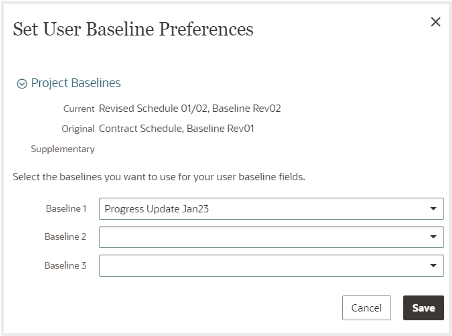
Once assigned, the properties of the baselines can be visualized as activity columns and/or as Gantt chart bars together with the current schedule. The assigned baselines are still available as a schedule and can be accessed and modified at any moment.
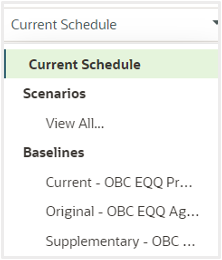
There are a few things that can be useful to know when assigning a baseline in Primavera Cloud. Some special attention is needed for the following points:
- Primavera relates the current schedule and the baselines based on the activity ID. Make sure no activity IDs are changed or reused without updating them in the baseline. IDs can be updated in all baselines by selecting “Renumber selected activities in Baselines” when renumbering Activity IDs in the schedule.

- Want to add Activities from current schedule that are not in the Baseline? By clicking on “Get Activities” in your Baseline, you can directly import the selected activities and their relationships from the current schedule.

Step 2: Collect Progress input
Next, progress is collected and entered in the tool. Here, a well-documented input data sheet is the key to success. Collect all the necessary information of the planned activities up to the Cut-Off Date/Time. Is your progress up to and including Friday? Then your Data Date should be Saturday at 00:00.
There are 2 useful ways to visualize the activities that are currently scheduled in the period leading up to the Cut-Off Date:
- Use the Progress Spotlight in the Gantt chart
- Create a ‘lookahead’ filter where the Remaining Early Start is within a range from the original Data Date and the new Cut-Off Date
The required input for these activities will depend on the activity status as depicted in the table below:
Not Started |
In Progress |
Finished |
|
Dates |
As scheduled |
|
|
Physical % Complete |
0% |
|
100% |
Units |
|
|
|
Costs |
|
|
Some aspects to consider when collecting the progress input for an update in OPC:
- Avoid Invalid Progress Dates where actual dates are after the Cut-Off Date
- The Activity % complete can be based on Duration, Physical, Units or Scope % complete. Want to know more about % complete? Check our blogpost!
Step 3: Enter The Progress
The progress from the previous step can now be implemented directly in OPC in the same order as the previous table:
- Activity Status
- Dates
- % complete/Units/Costs/Scope
At this point your schedule might not look correct; durations and dates don’t seem in line with the input, relationships are not respected, etc…. Don’t worry, this is normal at this stage. Don’t let this freak you out by scheduling too early.
Some aspects to consider while entering the progress in OPC:
- Unlike MS Project, Primavera does not recalculate the remaining duration itself based on the new Data Date. The new remaining duration or an expected finish needs to be filled in manually.
- Is Primavera not allowing you to insert a certain actual start or finish date? Check the activity calendar and the time of the dates.
- Resource calculations will depend on the activity Duration Type and the project resource assignments settings under your project calculations settings. Make sure to check these settings when the resource progress is not acting as desired when adding unit/cost actuals.
Step 4: reschedule based on new Data date
Once we have entered all our input, it’s time to press F9 and fill in the new Data Date, i.e., the Cut-Off Date. Primavera will reschedule activities after the Data Date based on the Critical Path Method. Before we sit back and relax, carefully check the scheduling options in the schedule window.
A specific scheduling option related to projects in progress, is how OPC should deal with out-of-sequence activities and how to deal with lag. For out-of-sequence activities you can choose to ‘retain logic’, ‘progress override’ or use ‘actual dates’. In our blogpost "Scheduling progressed activities" we go more into detail about the effect of this function on your schedule.

Activities that are out-of-sequence are reported in the scheduling log file. This file also warns for progress irregularities like activities with actual dates later than the Data Date. The latter can also be visualised in the Schedule Health Score.
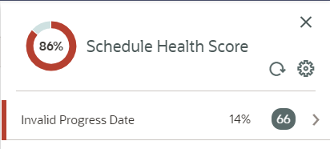
Step 5: Revise Schedule
Make sure to check the scheduled programme thoroughly before proceeding. Verify if the schedule is in line with the input from your data sheet. Make changes if necessary and reschedule.
After this technical check, also perform a sanity check. Are the performed activities making sense and is the impact on the future schedule realistic? Big impacts on the schedule should be explainable.
Did you make a huge mistake while updating and want to go back to your previous schedule? Luckily, it’s possible to reset your schedule to a previous saved Baseline with the “set as current schedule” baseline option. If necessary, make a baseline from your history first.
Step 6: Reporting
Now that all this progress is implemented and processed by the schedule, the data needs to be visualised in useful layouts that facilitate the analysis of the schedule. Output created from the schedules should enable the project manager to have a clear view of the project performance and identify possible planning issues that need some attention.
The possibilities for creating useful progress layouts in OPC are endless. Create a nice print of the schedule or check out the Dashboard App to create useful KPI’s and Visualisations.
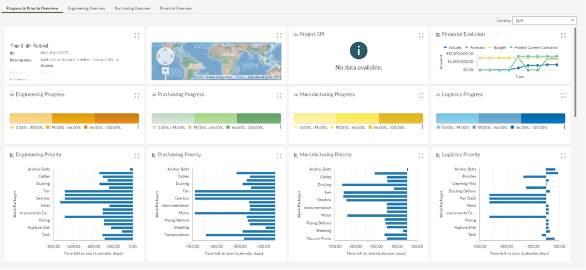

The value of monitoring the schedule lies within analysing the performance and a critical reassessment of the forecast.
Step 7: Analyse
After monitoring, the next step is to control by analysing and influencing our project. To properly control our project, we need to be critical and learn from our analysis.
What are the reasons activities are taking longer?
What activities are underperforming and how much?
Why are activities becoming critical?
Use this knowledge to get a better understanding and to have better estimations of the future. By re-evaluating the future schedule based on the gained knowledge during the execution, possible problems can be identified and mitigated at an early stage.
Learn MoreConclusion
After you successfully completed these 7 steps, your progress update reflects the actual works and forecasts the future works. Based on this progress update, possible issues can be identified and form the basis of a mitigation plan. This schedule change analysis is part of the control phase where the schedule is reassessed and optimised. These mitigation actions will lead to changes in the schedule such as adjustments in resources, logic links, activities, … etc. This procedure is called “half-step scheduling” and can be seen as a non-progress revision based on knowledge gained from the progress reporting.

